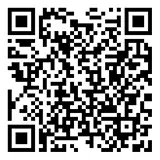Reading Time: 5 minutes
In a construction era where inefficiencies and miscommunication can take a project off-track, it is crucial to keep projects on track using construction field productivity tracking. With the emergence of real-time construction tracking and top-of-the-line construction productivity tools, various stakeholders can make informed decisions quickly. The following article focuses on the importance of field productivity software to track construction tasks in real-time and enhance the general health and performance of a project.
The significance of construction field productivity tracking in modern building.
Construction productivity is connected to how efficient specific elements can be on the job site including equipment, materials, and labor. Inadequate job site productivity causes delayed project handovers, cost overages, and unsatisfied clients. Based on legacy processes and tools, productivity monitoring was heavily dependent on manual reports which was prone to schedule lags and errors.
Nevertheless, using digital conversion to reshape the construction scenario, firms are moving to real-time construction tracking. This leads to perpetual tracking of job site work, quick flagging of bottlenecks, and expedited decisions.
Work Smarter, Not Harder
iFieldSmart empowers your team with AI-driven efficiency to simplify scheduling, boost collaboration, and keep projects on track.
Schedule a MeetingWhat are the obstacles in legacy tracking systems?
Before exploring digital platforms, it is important to learn the constraints of old tracking methods.
- Delays in data entry: Spreadsheets and logs were refreshed at the end of the day or week which led to delayed results.
- Errors due to manual intervention: Manual reporting methods often lead to inaccuracies and incompleteness.
- Absence of standardization: The involvement of multiple supervisors would lead to data inconsistencies.
- Narrow visualization: Construction project managers are unable to track various job sites in real-time.
These hurdles impede precise construction field productivity tracking, which makes it challenging to stay on budget and schedule.
The need for digital transformation: Real-time construction tracking.
Cloud-driven platforms, mobile software, AI, and IoT support construction teams with real-time productivity tracking. Digital tools gather and assess data quickly, which helps job site teams and project leads to:
- Track crew performance and use of equipment.
- Monitor work progress against said plans.
- Receive notifications about safety problems and site delays.
- Create precise and automated reports.
Digital techniques to enable real-time construction tracking.
1. Mobile-driven field reporting platforms.
Mobile apps help site and supervising personnel capture data from the job site using devices like tablets or smartphones. These tools have replaced paper-driven techniques and regularized reporting arrangements.
What are the benefits?
- Updates in real-time on task completion, material use, and labor work.
- Greater accountability based on image and video documentation.
- Streamlined connectivity with construction management platforms.
What are the popular platforms used?
iFieldSmart Technologies, Fieldwire, and Procore.
2. Field productivity software tools.
Advanced, cloud-based, and in-depth field productivity software integrates back-office operations and job site tasks. These tools provide interfaces, analytics in real-time, and workflow automation.
Their capabilities include:
- Continuous status updates and task monitoring.
- Higher labor efficiency which includes the output of the field crew based on 60-minute intervals.
- Daily reports which include material logs, project delays, and weather patterns.
- GPS-based tracking for location-driven monitoring.
What are the popular platforms used?
iFieldSmart Technologies, Construction Cloud, and Trimble.
3. Internet of Things (IoT) wearable and devices.
Devices reinforced by IoT technology including drones, sensors, and wearable’s collect information on equipment use, environmental patterns, and worker migration.
What are the applications of these devices?
- Track fuel levels and idle timelines for equipment.
- Trace the location of personnel for higher productivity and safety.
- Utilize drones for updates on job site progress in real-time.
These technologies are used to automate information gathering and ensure greater precision and schedules.
4. Precise attendance systems and time monitoring.
Present-day tracking tools provide advanced systems that are more than just punch-ins or punch-outs. Biometric attendance equipment, facial recognition techniques, and geofencing ensure labor records are precise and safe.
What are the benefits of these systems?
- Prohibit punching of colleagues and time steals.
- Monitor manpower use across various project shifts.
- Build productivity reports calculating actual work hours.
5. Connecting various construction management software.
Digital productivity platforms include advanced and in-demand construction project management software including iFieldSmart Technologies, Primavera, or Microsoft Project. These tools encourage accurate scheduling, costing, and allocation of resources.
What are the benefits of using modern construction productivity tools?
Accelerated decision-making.
With quick access to project information, stakeholders like managers can expedite decision-making – by reassigning resources or modifying work sequences.
Lower downtime.
Alerts in real-time can flag crews that are not performing or equipment with idle time. Preemptive identification eliminates unproductivity and project delays.
Quick collaboration.
Digital tools are used to communicate on a unified platform that ensures every team member aligns with the project scope.
Precise work forecasting.
Historical data that measures productivity supports accurate estimation of future work while enhancing project planning and bidding.
Greater task accountability.
Digital platforms generate an accurate audit sequence that is automatically logged for tasks, hours, and photos that are traced back to the source, which enhances clarity and dependability.
What are the best practices to implement advanced field productivity software?
- Educate your team – make sure your supervisors and field personnel are at ease using these tools.
- Begin with smaller projects – Employ these tools on smaller projects to calculate usability and ROI before taking it up several notches.
- Select the perfect platform – Deploy tools that are appropriate for your project size and type along with cost and complexity.
- Connect various systems – Make sure every platform connects with present project management platforms or ERP tools.
- Calibrate and enhance – Perform continuous analysis of collected data to improve workflows and enhance efficiency.
Heading to a conclusion.
The future of the AEC industry is driven by digital tools and real-time construction tracking. It is a crucial aspect as enabling field productivity software can support contracting firms in navigating project inefficiencies, achieving quick project handovers, and improving profitability. Whether it’s the management of residential projects or large-scale projects, making a smart investment in tools like iFieldSmart Technologies would ensure you and your project stay at the head of the competition.








